

VERTICAL JUMP TRAINING—PART 1 by Coach Jim Massaro
The vertical jump has become one the cornerstones of athletic testing. It allows for testing for football and basketball, and all other sports, as well as some physical education programs. I have seen a lot of programs out there on how to cheat the vertical jump test, but not many on how to prepare for it. Cheating on this test is not my position at all, so I will not address any of those methods. My program is designed so you, the athlete, can improve and excel at this test.
The vertical jump combines explosive strength and reactive strength and must be performed with proper technique. The two major areas of focus in this movement are deceleration followed by acceleration. Simply put, what is measured is how fast the body switches from explosive strength to reactive strength. In this training the one major goal is to make the transition from eccentric contraction to concentric contraction as fast as lightning. The faster the body can make this transition, the more power and explosion you will produce. Pay special attention to the fact that the ability to transfer from eccentric to concentric will create greater force and power. As we are looking to increase acceleration of explosion, you must keep your training loads in the 40 to 65 percent range. Don't get hooked on weight room numbers. Always focus on explosion, power, and speed. Take your time in your set up, as the most important element of all is your postural alignment. This will increase maximum muscle control and decrease injuries. You are looking for fluidity in motion. Following are the first five exercises to increase your vertical jump:
|
Key points to watch and follow: 20 – 30 sec rest between sets. Vary hand grip each set. Proper body alignment. |
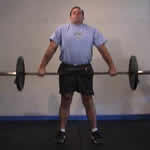 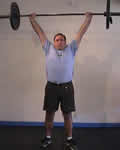
|
|
To perform this exercise, assume the squat position and drop down to a full squat (this is the deceleration phase, so drop as fast as you can and come to a complete stop). Pause for one to three seconds and fire to the start position (in acceleration phase you must explode up), then repeat. Have your coach or training partner give you the signals to come out of the squat position. A simple clap or go signal will work. |
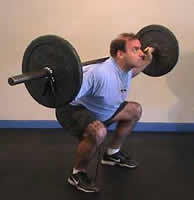
|
|
To perform this exercise, stand on the box and jump off, sticking the landing in the squat position. Always keep perfect body posture: head up and back in squat position. This will increase reactive power and speed. |
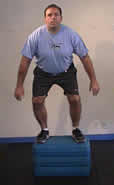 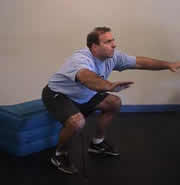
|
|
Approach the bar in your dead lift position but instead of having your hands at normal grip, move them to the outside ring on the bar (this is the snatch position). Then with head up and back in proper alignment, stand up as fast as you can, staying in control. Lower to the floor and perform again. A helpful cue: as you are standing up with the weight, think about pushing the floor away from you. Use this method in all of your squat movements. |
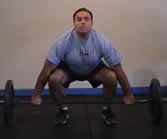 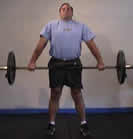 |
|
Kneel down on the floor and have your coach hold your ankles (but not the Achilles tendon). Stay straight; go forward until you create tension on hamstrings. Hold for the required time, and then drop to floor, pulling yourself back up from your hamstrings (not a push-up) to the start position. |
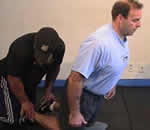 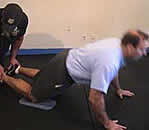 |
|
By incorporating these five exercises into your regular strength-training program twice a week, you will see dramatic advancements in your vertical jump. | |